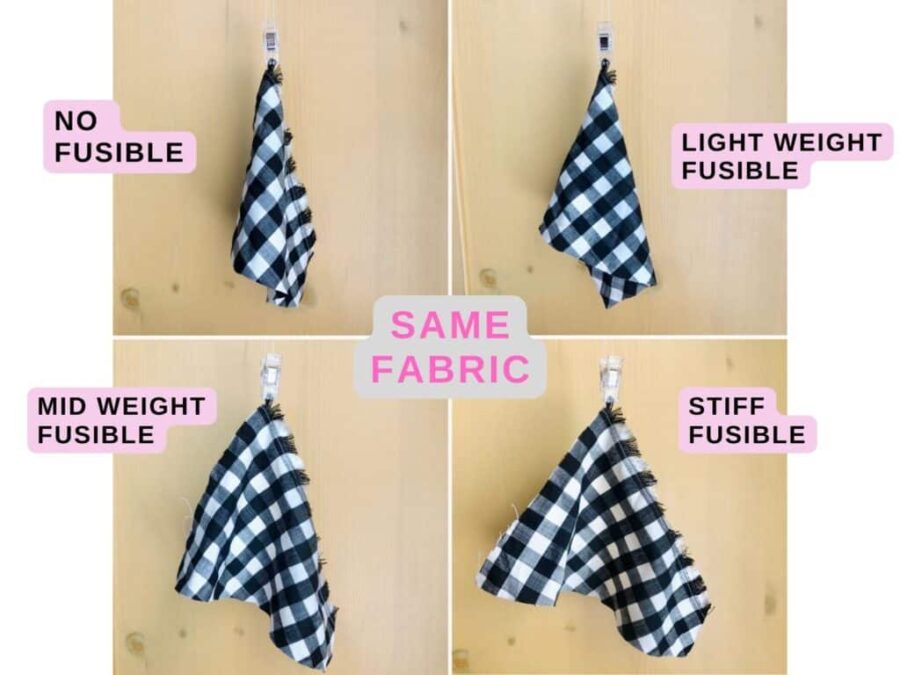Ever felt overwhelmed by the myriad of choices when it comes to interfacing? You’re not alone! From sheer to heavyweight, fusible to sew-in, the options seem endless. But don’t worry; I’m here to break it all down for you. Let’s dive into the world of interfacing and make your sewing projects shine! ✨
The Purpose of Interfacing
Interfacing doesn’t just offer stability during wear but also ensures that your creations maintain their freshness, even after several washes and wears. It’s the unsung hero of sewing!
Diverse Interfacing Options
While there are countless interfacing varieties out there, most projects will have you using one or two types. The primary classifications include:
- Fusible Interfacing (Iron-On)
- Woven Fusible
- Nonwoven Fusible
- Non-Fusible Interfacing (Sew-In)
- Woven Non-Fusible
- Nonwoven Non-Fusible
Interfacing comes in various shades like white, black, beige, and gray, with white and black being the most popular picks at fabric stores. And remember, the weight ranges from sheer to heavy.
Key Tips for Picking the Perfect Interfacing
Keep this golden rule in mind: always opt for interfacing that’s the same weight as or lighter than your fabric. If in doubt, you can’t go wrong with nonwoven fusible interfacing; it pairs well with both wovens and knits. Consider your garment’s shape and washability too. And when it comes to the fusible vs. sew-in debate, it all boils down to personal preference and the nature of the fabric you’re working with.
Deep Dive into Fusible Interfacing
Iron-on or fusible interfacing is backed with adhesive that needs heat to activate. The main types include:
- Woven Fusible Interfacing: This aligns well with woven fabrics, ensuring the fabric and interfacing grains match. The weights range from sheer to heavy.
- Nonwoven Fusible Interfacing: Grain-free and non-fraying, this versatile interfacing suits both woven and knit fabrics. When uncertain, stick to a weight that’s not more than your fabric’s weight. Additionally, for those seeking efficiency, there are fusible aids like nonwoven fusible waistbanding that come handy for waistbands and cuffs.
How to Master the Art of Applying Fusible Interfacing
While instructions might slightly vary, here are some general steps:
- Test on a fabric scrap first. Better safe than sorry!
- Set your iron to the right temperature. Most interfacings I’ve worked with need a steam iron.
- Smooth out your fabric and place the interfacing (sticky side down).
- Trim the interfacing edges slightly larger than the fabric.
- Use a damp cloth to prevent scorching while ironing.
- Press firmly for 10-15 seconds. Adjust based on fabric thickness.
- Once done, steam the fabric’s right side.
- Check the interfacing’s adherence after it cools.
Working with Non-Fusible (Sew-In) Interfacing
This interfacing comes in woven and nonwoven types, with various weights to boot. To use, pin it, baste to the fabric’s wrong side, and then stitch with your machine. For stiffer versions like sew-in waistbanding, sew it into the waistband’s back.
Special Mention: Fusible Web
This interfacing aid, available in different widths, is perfect for bonding sew-in interfacing instead of pins. It’s also a lifesaver for creating seamless hems and securing appliques without pins.
Interfacing or Stabilizer?
If you’re into embroidery, you might be familiar with stabilizers. They reinforce fabric during stitching. Unlike interfacing, they’re mostly removed post-stitching. They come as tear-away, cut-away, or wash-away.
Where to Shop for Interfacing
You can find interfacing at local or online fabric stores, even places like Amazon. I personally favor Pellon interfacing from JOANN. But whether it’s Hobby Lobby, Walmart, or elsewhere, just hunt for the best deals. After all, quality is pretty consistent across brands in my experience.
Key Interfacing Details
| Type | Characteristics | Usage |
|---|---|---|
| Fusible Interfacing | Iron-On, Adhesive backed | For wovens and knits |
| Non-Fusible Interfacing | Sew-In, No adhesive | For fabrics sensitive to heat |
| Fusible Web | Bonding aid | Hems, appliques |
| Stabilizer | Reinforces fabric during stitching | Embroidery |

